Klepon (also known as onde onde in Malaysia and Singapore) is a sweet rice cake treat you’ll want to whip up again and again. Bite into hot, bursting gula melaka, surrounded by chewy pandan and soft coconut, in this awesome Indonesian snack.
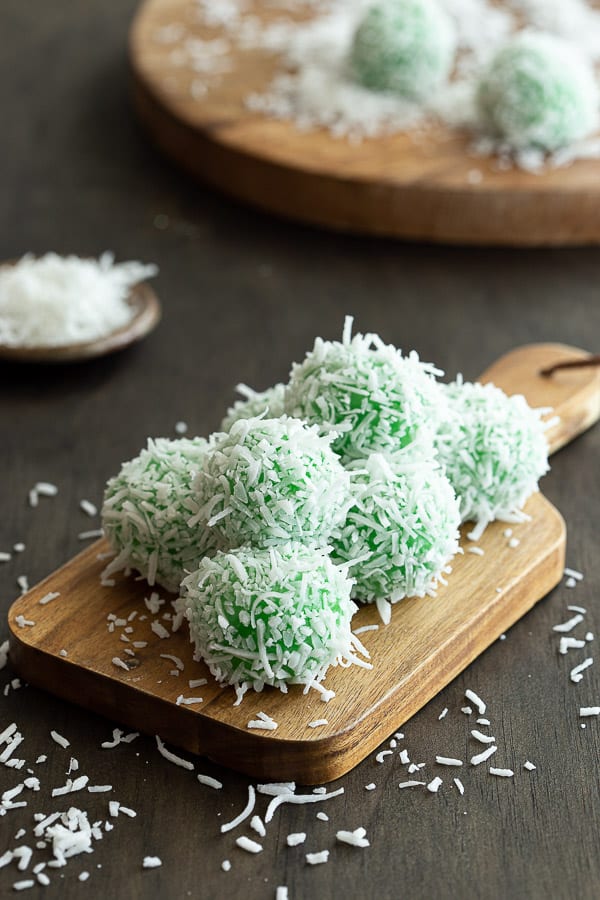
Why We Love This
This is for lovers of chewy rice cakes – if you’ve tried Japanese mochi or Korean tteok – you’re going to love making these sweet delights at home!
Klepon only take 20 minutes to make, since we’ll be using glutinous rice flour, rather than cooking and breaking down glutinous rice from scratch.
Related: Essential Pandan Recipes / Pandan Extract / Seri Muka
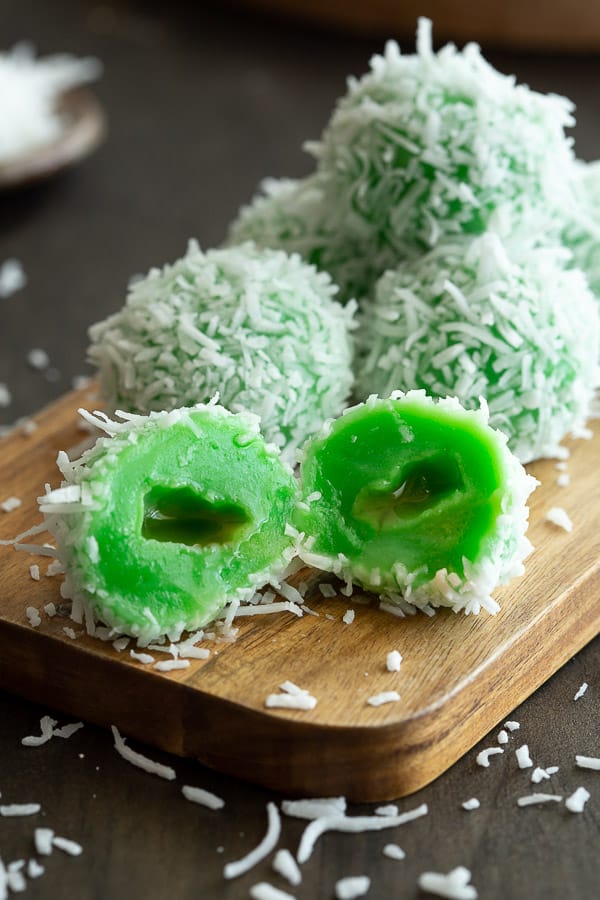
What is Klepon?
Klepon is an Indonesian sweet treat made from glutinous rice flour combined with the amazing flavour combination of pandan, coconut and palm sugar. It’s a popular street food snack, often found at morning and afternoon markets around Indonesia. They’re also known as onde onde in Malaysia and Singapore.
We loved eating these for breakfast (we have a sweet tooth okay!) from the Seminyak morning market on Jl. Raya Basangkasa in Bali, Indonesia. You’ll usually find them alongside serabi coconut pandan pancakes, dadar gulung and seri muka.
The stand out experience in klepon is the sweet burst of palm sugar stuffed in the middle of the klepon.
What You’ll Need for Coconut and Pandan Rice Cakes
Six ingredients stand between you and creating these delicious sweet morsels. Salt and coconut milk may already be in your pantry, but here’s a little more info about what else you need:
- Palm Sugar – This is usually a brown sugar that comes in a solid shape that can be chopped, grated and melted. You’ll want to try and find gula jawa (the Indonesian palm sugar) or gula melaka (Malaysian palm sugar). Alternatives can be regular palm sugar, coconut sugar or brown sugar. Or, just swap out for chocolate!
- Pandan Flavouring – Some recipes call for fresh pandan extract, but to keep things simple we use the popular pasta pandan flavouring. It stores well, and is easy to find at Asian supermarkets or online.
- Glutinous Rice Flour – This flour has a very different texture to regular flour, and you’ll feel the difference as you make the dough. It’s usually in a clear bag with green writing, or you can also use the Japanese version called Mochiko.
- Shredded coconut – If you can shred or grate fresh coconut, this will taste best. If not, use any dried shredded or desiccated coconut and steam it to soften and fluff it up. This should be easy to find at most supermarkets as well as frozen at Asian supermarkets.
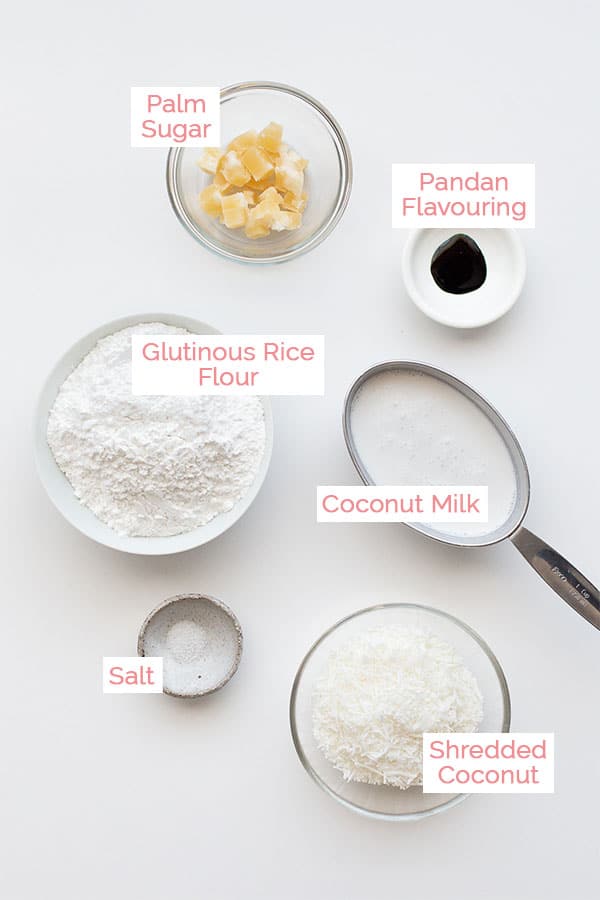
How to make klepon:
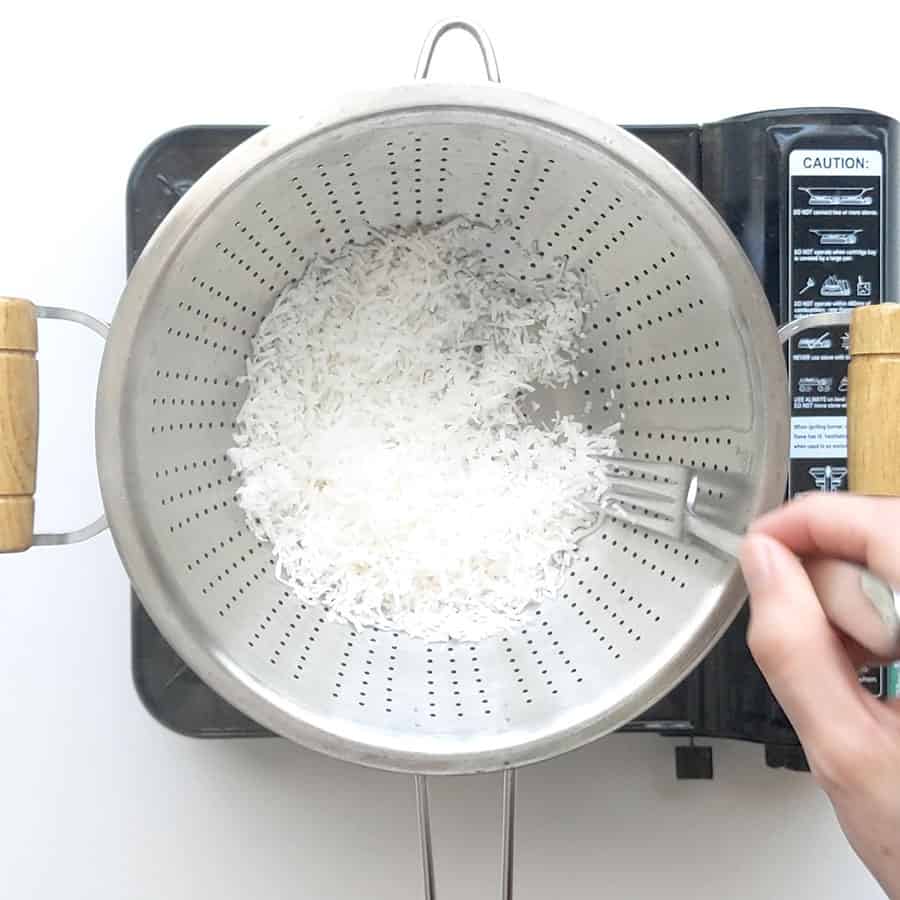
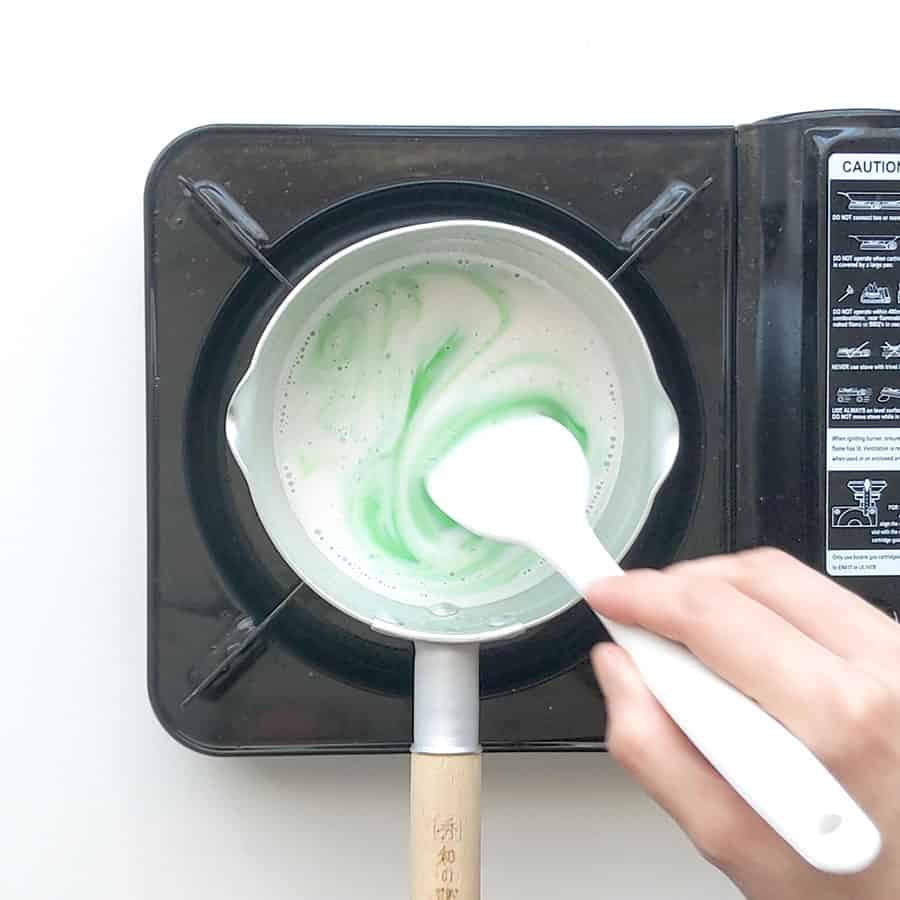
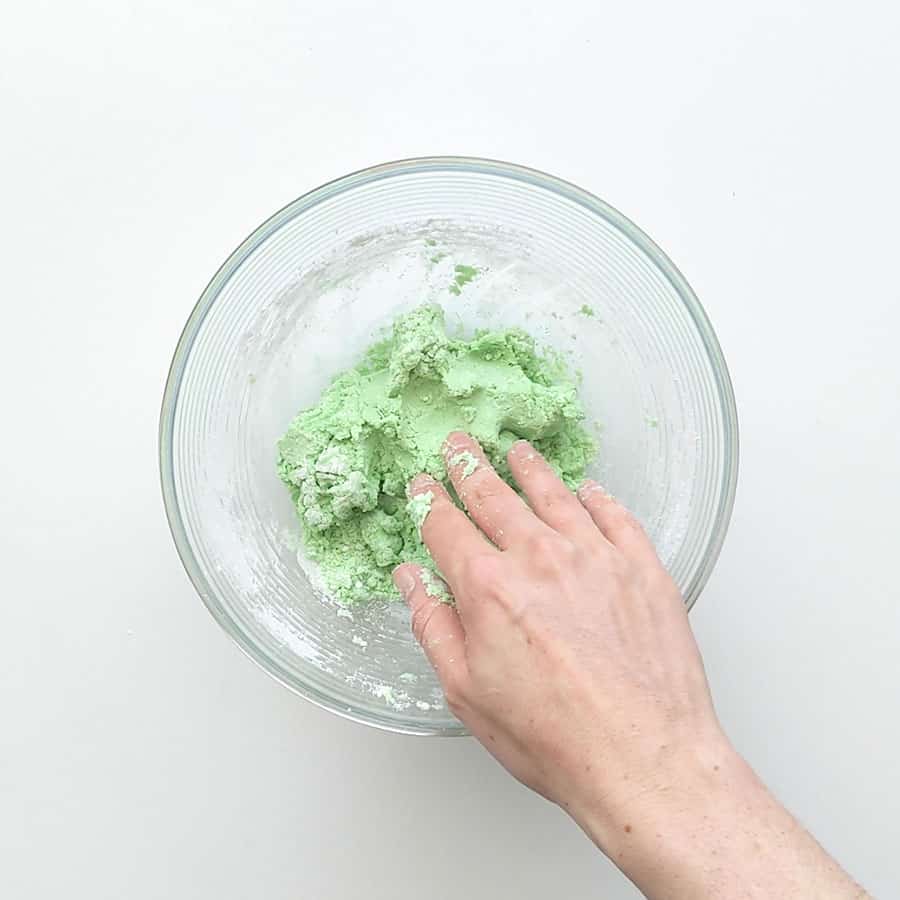
- Steam or thaw shredded coconut to get it soft and fluffy (around 5-10 minutes). Optional: Cover with a towel to keep moist until ready to use.
- In a small saucepan, add the cup of coconut milk, teaspoon of pandan flavouring and pinch of salt. Warm on low heat for a few minutes and remove.
- In a medium bowl, add 1 & ½ cups of glutinous rice flour and warmed pandan coconut milk. Stir with a spoon until combined, then knead until it turns a soft dough. It should be flexible and pliable at this stage.
Begin to shape klepon balls by taking heaped teaspoon of the dough and rolling it around into a ball (around 3cm / 1 in, in diameter). Work quickly here so the dough doesn’t dry out. Tip: Place the dough in a plastic bag to hold in the moisture.
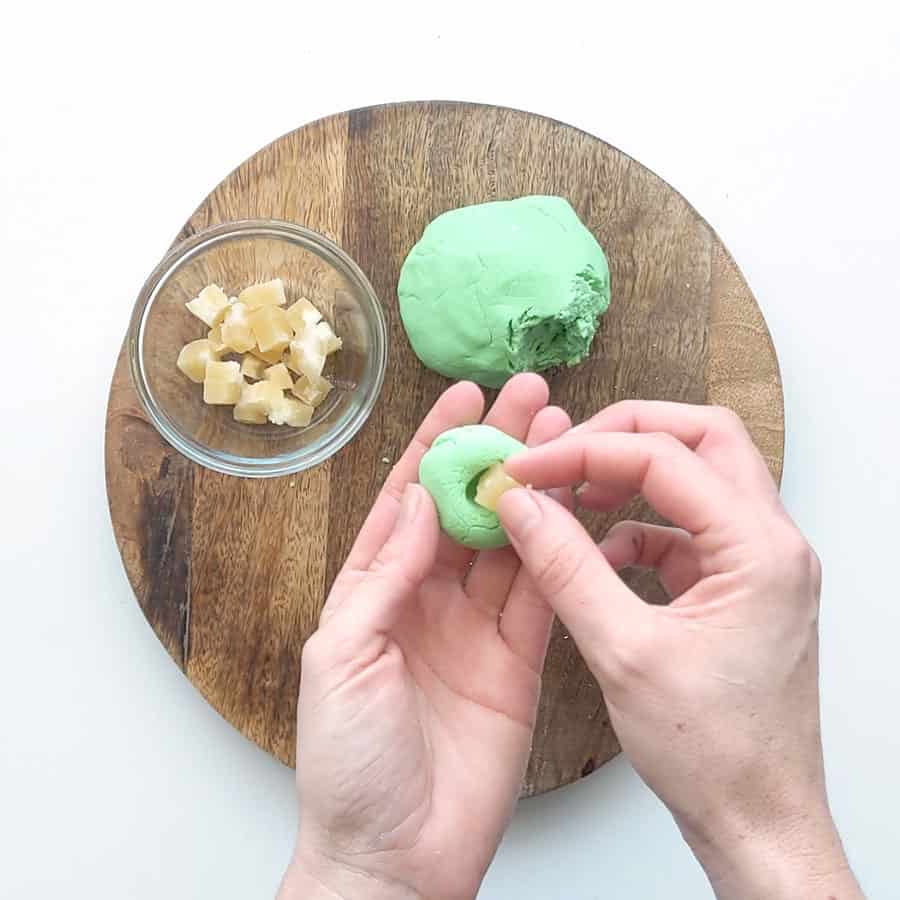
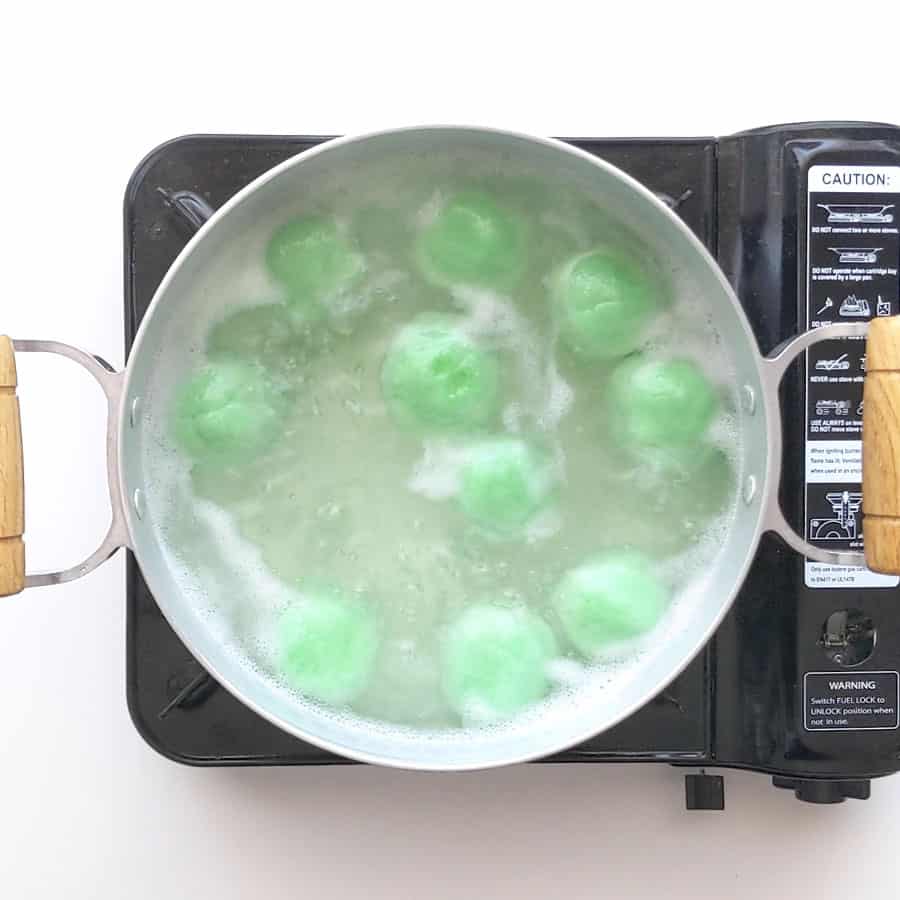
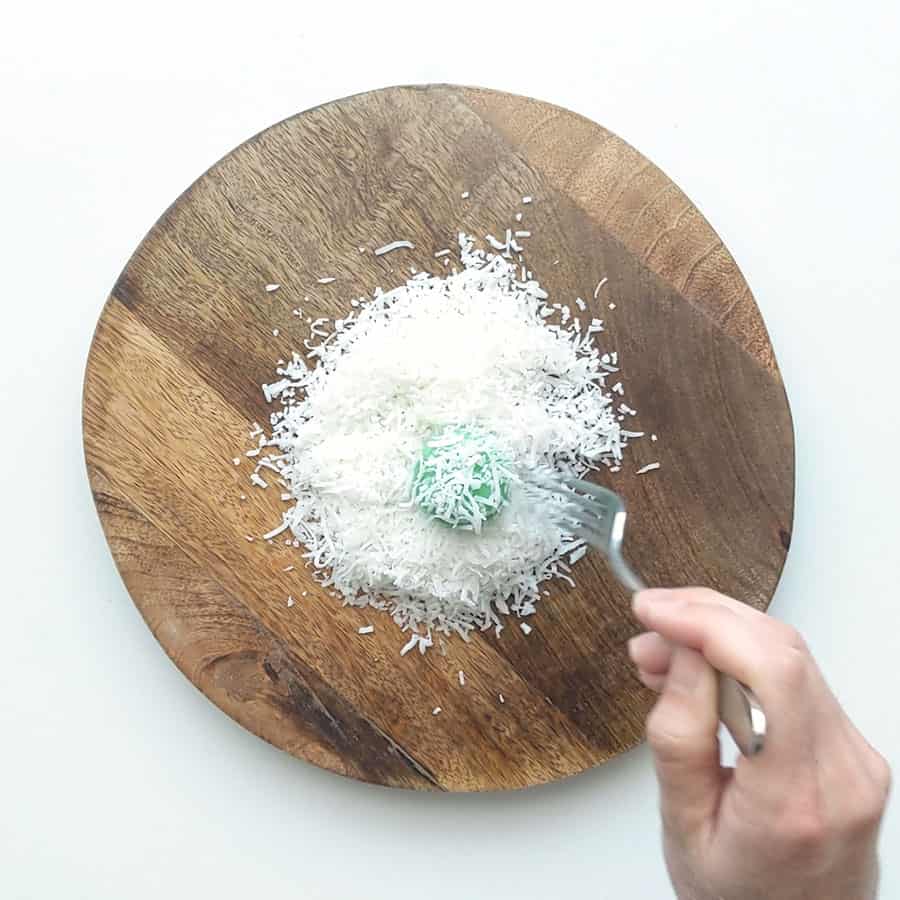
- Now it’s time to stuff them with the palm sugar! Take a ball and push an indent into the centre, making a hole. Pop in a piece of chopped palm sugar and close the dough over the hole.
Make sure it’s sealed by pinching the dough back together, then roll it back into a ball with your palms. Repeat until all the klepon are ready to cook! - Bring a large pot of water to the boil. Once boiling, place the klepon into the pot. Avoid overcrowding, and do them in batches if necessary. The dough is cooked when they float to the top.
This usually takes around 5-10 minutes, you can cook them a little longer to ensure the gula melaka melts and heats up on the inside. Remove from the water with a slotted spoon once cooked. - Next, grab the bowl of steamed coconut and roll around the klepon to coat them. Use a fork or spoon if you want to avoid the coconut and klepon sticking to your fingers.
Serve warm or at room temperature. Make sure not to burn your mouth on the hot gula melaka inside!
Wandercook’s Tips
- If your palm sugar melts too quickly as you make the klepon, just pop it in the fridge for 30 minutes to help hold its shape before you boil.
- If your palm sugar doesn’t melt, you need to boil the klepon for longer, remembering to give them at least 5-10 minutes.
- Klepon are best eaten on the same day or you can freeze them to eat later.
- Use a fork to coat the klepon in coconut, similar to when making Australian lamingtons.
- The klepon may stick a little to the bottom of the boiling pot. To clean, leave a little hot water in the pot so it stays soft, then you can then easily scrape off anything left with a dish brush.
FAQs
While both are similar in that they are variations of palm sugar, their names are based on their location sources. Gula means sugar in Malay and Indonesian. The other word is the name of origin. Melaka is from Malacca, Malaysia, and Jawa refers to the Javanese region in Indonesia. As unrefined sugars, they both vary in colour and taste, and can be anything from a very dark brown through to a pale yellow brown.
If using dried or desiccated coconut, it’s a good idea to steam it for 5-10 minutes first to soften the coconut so it’s as close to freshly grated coconut as you can get. If you’re wanting to save time, you can skip this step, it will just have a drier consistency.
Yes! If you’re not going to eat them all that day, any leftovers are best popped straight in the freezer. As it’s made from glutinous rice flour, the texture and mouthfeel will degrade quickly over a day, so it’s best to freeze them fresh. When thawing, pop them in the microwave to warm them up and serve immediately. Every microwave is different, so warm them in 20-30 second bursts, checking each time if they’re warm and soft to the touch.
This could mean your dough is drying out or doesn’t have enough liquid. There are two things you can do. Try placing the dough into a plastic bag to help hold in the moisture while you make each klepon. If it’s still too dry, add a little more coconut milk and work it through the dough, kneading it all together, then start to make the klepon.
Variations & Substitutes
- Gula Melaka / Gula Jawa – If you can’t source gula melaka or gula jawa, try to get a hold of any palm sugar in the first instance, or coconut sugar second. In an absolute pinch, reach for the brown sugar or molasses but be aware it will be a completely different flavour and may be harder to fill the klepon.
- Don’t like palm sugar? Try replacing it with chocolate or nutella instead!
- Glutinous Rice Flour – You can try using sweet potato or yam flour for a different take on the dish. We have not tested these though, so watch if you need to adjust the liquid to dry ingredient ratios.
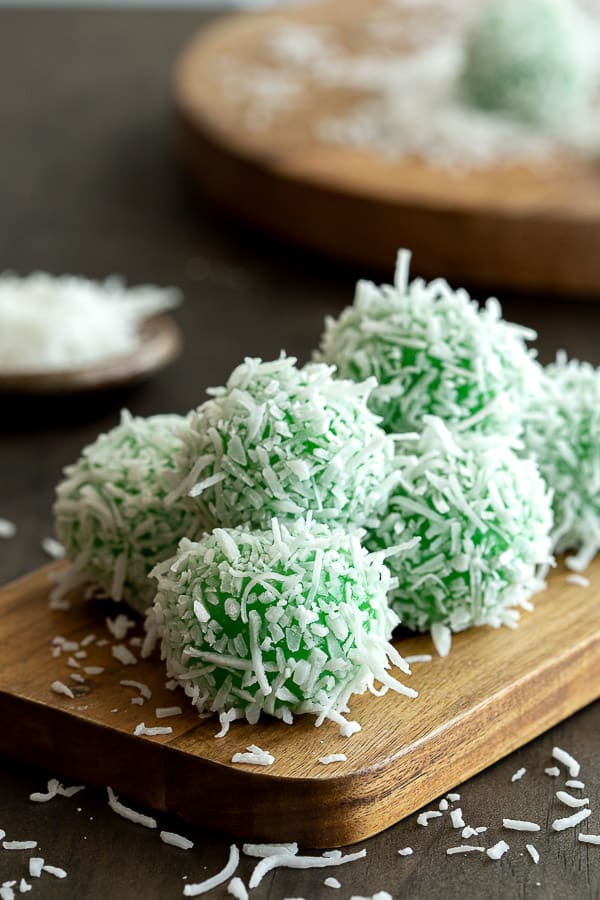
Want more sweet treats? These are some of our favourites:
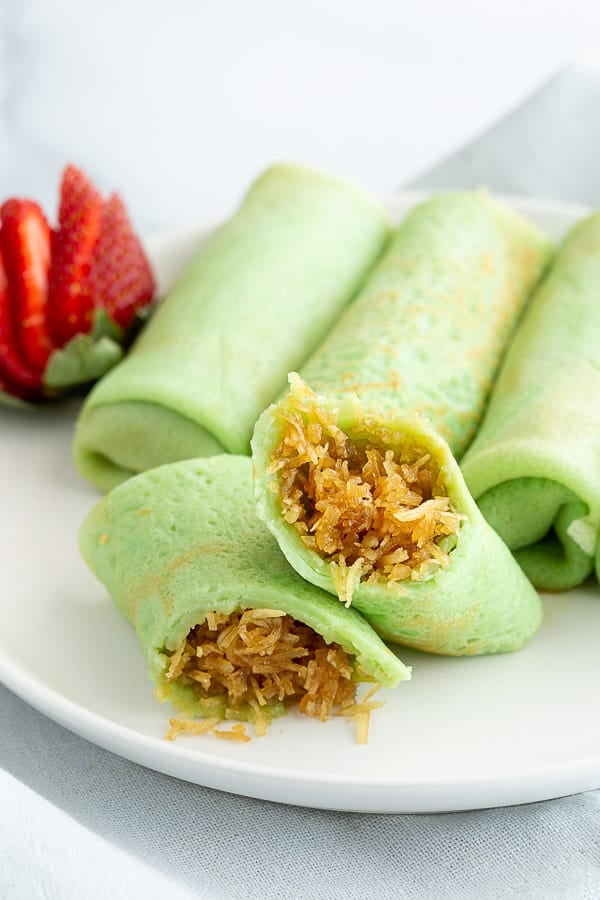
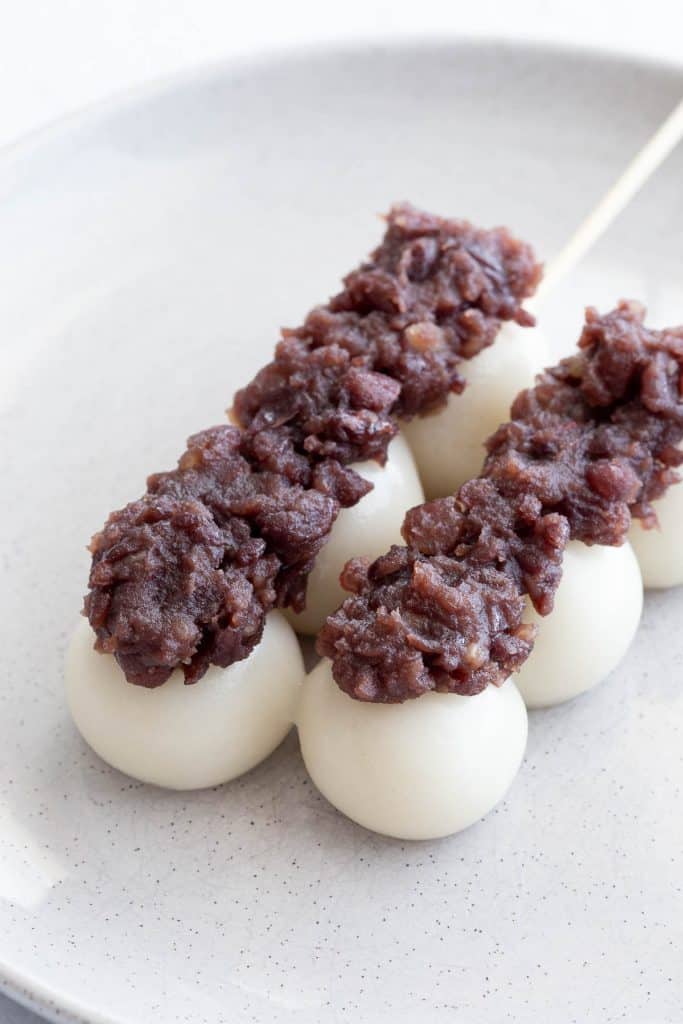
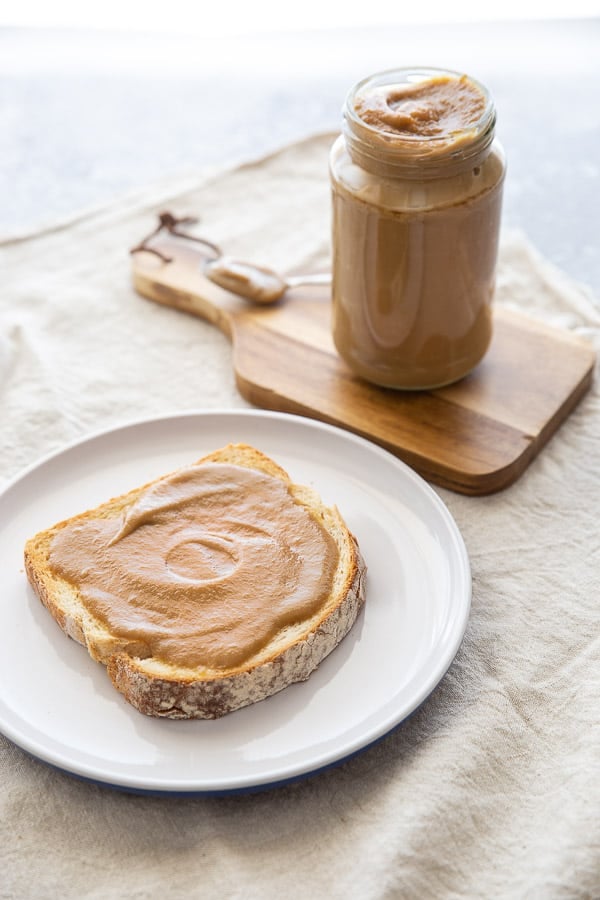
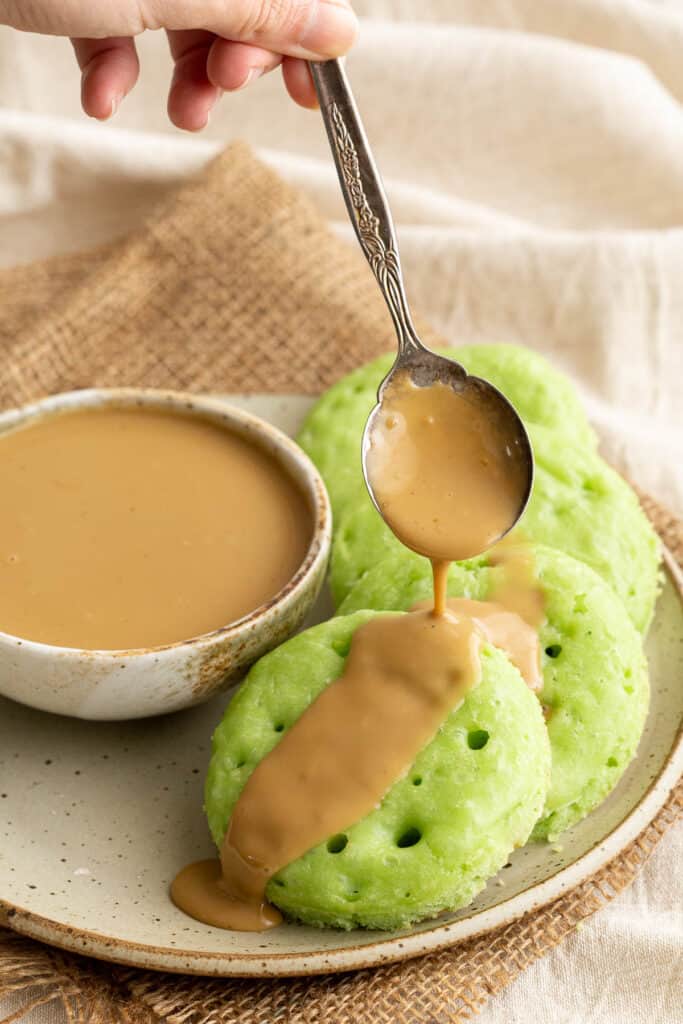
★ Did you make this recipe? Please leave a comment and a star rating below!
Ingredients
- 1 ½ cup glutinous rice flour
- 1 cup coconut milk
- ¾ cup coconut grated, desiccated or shredded
- 1 tsp pandan flavouring
- ¼ cup palm sugar gula melaka/gula jawa, chopped into small pieces (around 1-2cm / ½ in)
- Pinch salt
Instructions
- Steam or thaw shredded coconut to get it soft and fluffy (around 5-10 minutes). Optional: Cover with a towel to keep moist until ready to use.¾ cup coconut
- In a small saucepan, add the cup of coconut milk, teaspoon of pandan flavouring and pinch of salt. Warm on low heat for a few minutes and remove.1 cup coconut milk, 1 tsp pandan flavouring, Pinch salt
- In a medium bowl, add 1 and ½ cups of glutinous rice flour and warmed pandan coconut milk. Stir with a spoon until combined, then knead until it turns a soft dough. It should be flexible and pliable at this stage.1 ½ cup glutinous rice flour
- Begin to shape klepon balls by taking heaped teaspoon of the dough and rolling it around into a ball (around 3cm / 1 in, in diameter). Work quickly here so the dough doesn't dry out. Tip: Place dough in a plastic bag to hold in the moisture.
- Now it's time to stuff them with the palm sugar! Take a ball and push an indent into the centre, making a hole. Pop in a piece of chopped palm sugar and close the dough over the hole. Make sure it's sealed by pinching the dough back together, then roll it back into a ball with your palms.¼ cup palm sugar
- Repeat until all the klepon are ready to cook!
- Bring a large pot of water to the boil. Once boiling, place the klepon into the pot. Avoid overcrowding, and do them in batches if necessary. The dough is cooked when they float to the top. This usually takes around 5-10 minutes, you can cook them a little longer to ensure the palm sugar melts and heats up on the inside. Remove from the water with a slotted spoon once cooked.
- Next, grab the steamed bowl of coconut and roll around the klepon to coat them. Use a fork or spoon if you want to avoid the coconut and klepon sticking to your fingers.
- Serve warm or at room temperature. Make sure not to burn your mouth on the hot palm sugar (gula melaka) inside!
Video
Recipe Notes
- If your palm sugar melts too quickly as you make the klepon, just pop it in the fridge for 30 minutes to help hold its shape before you boil.
- If your palm sugar doesn’t melt, you need to boil the klepon for longer, remembering to give them at least 5-10 minutes.
- Klepon are best eaten on the same day or you can freeze them to eat later.
- Use a fork to coat the klepon in coconut, similar to when making Australian lamingtons.
- The klepon may stick a little to the bottom of the boiling pot. To clean, leave a little hot water in the pot so it stays soft, then you can then easily scrape off anything left with a dish brush.
- What’s the difference between gula melaka and gula jawa? While both are similar in that they are variations of palm sugar, their names are based on their location sources. Gula means sugar in Malay and Indonesian. The other word is the name of origin. Melaka is from Malacca, Malaysia, and Jawa refers to the Javanese region in Indonesia. As unrefined sugars, they both vary in colour and taste, and can be anything from a very dark brown through to a pale yellow brown.
- Can I use desiccated coconut? If using dried or desiccated coconut, it’s a good idea to steam it for 5-10 minutes first to soften the coconut so it’s as close to freshly grated coconut as you can get. If you’re wanting to save time, you can skip this step, it will just have a drier consistency.
- Can I freeze Klepon / Onde Onde? Yes! If you’re not going to eat them all that day, any leftovers are best popped straight in the freezer. As it’s made from glutinous rice flour, the texture and mouthfeel will degrade quickly over a day, so it’s best to freeze them fresh. When thawing, pop them in the microwave to warm them up and serve immediately. Every microwave is different, so warm them in 20-30 second bursts, checking each time if they’re warm and soft to the touch.
- My klepon dough is cracking or crumbly, why? This could mean your dough is drying out or doesn’t have enough liquid. There are two things you can do. Try placing the dough into a plastic bag to help hold in the moisture while you make each klepon. If it’s still too dry, add a little more coconut milk and work it through the dough, kneading it all together, then start to make the klepon.
- Gula Melaka / Gula Jawa – If you can’t source gula melaka or gula jawa, try to get a hold of any palm sugar in the first instance, or coconut sugar second. In an absolute pinch, reach for the brown sugar or molasses but be aware it will be a completely different flavour and may be harder to fill the klepon.
- Don’t like palm sugar? Try replacing it with chocolate or nutella instead!
- Glutinous Rice Flour – You can try using sweet potato or yam flour for a different take on the dish. We have not tested these though, so watch if you need to adjust the liquid to dry ingredient ratios.
Nutrition
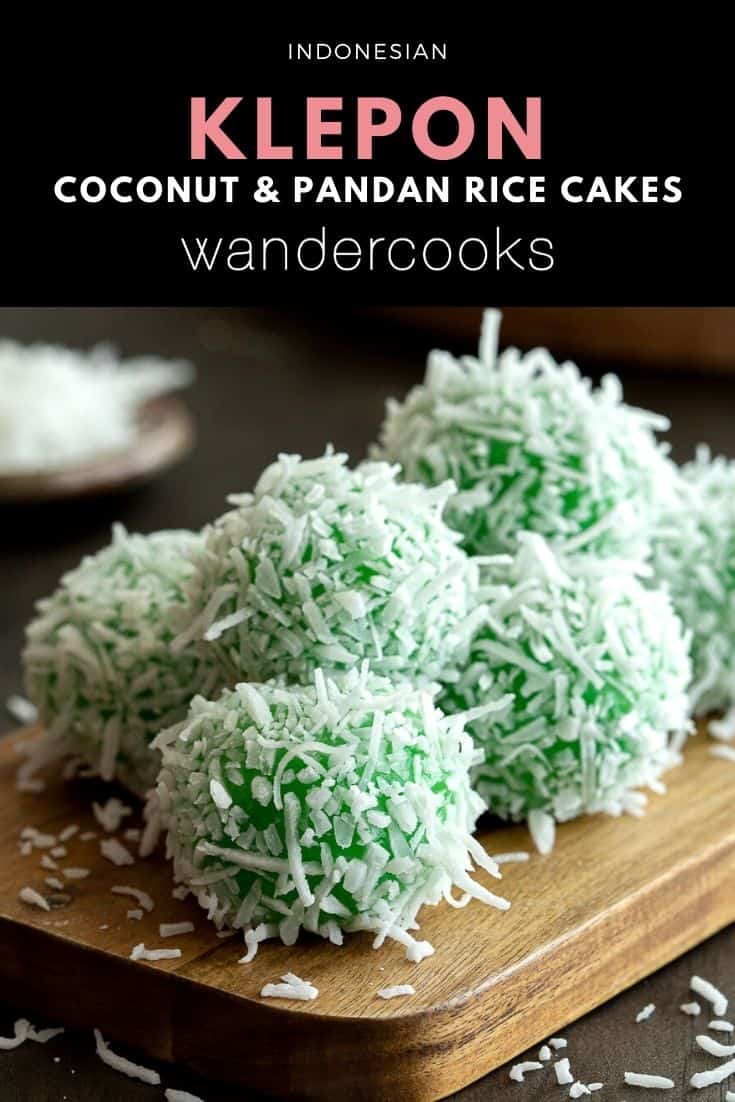

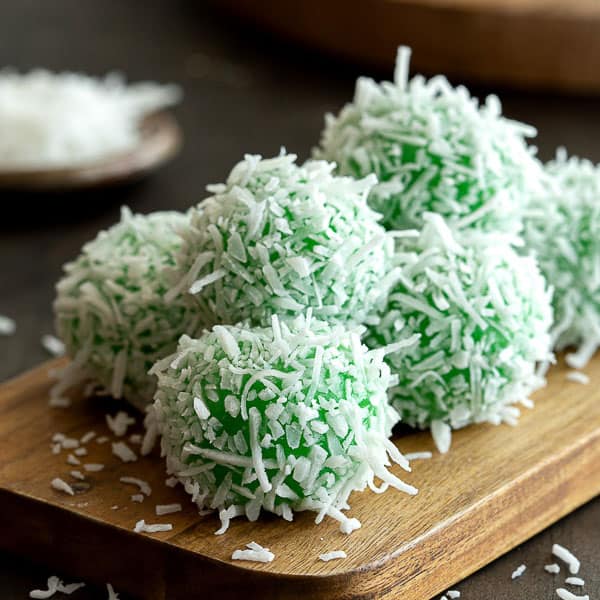


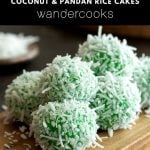
4 Comments
Casey Gonzalez
08/12/2023 at 12:47 pmCan this work with ube extract?
Wandercooks
12/12/2023 at 12:08 pmHey Casey, you could certainly try! That would be a lovely flavour I think with this recipe. Let us know how you go. 🙂
Jervee
16/10/2020 at 9:59 pmThank you for this recipe! I appreciate you using ingredients that people who live abroad (like me) have access to. Pandan doesn’t grow in Germany and I don’t think I have seen a corner store with a coconut grating machine lately. I have yet to try your recipe but I am veru excited to.
Wandercooks
17/10/2020 at 4:06 pmOh you’re very welcome! We’re the same with fresh pandan and coconut, so glad to hear it was helpful. Hope you have fun cooking it, you’ll have to let us know how you go! 🙂